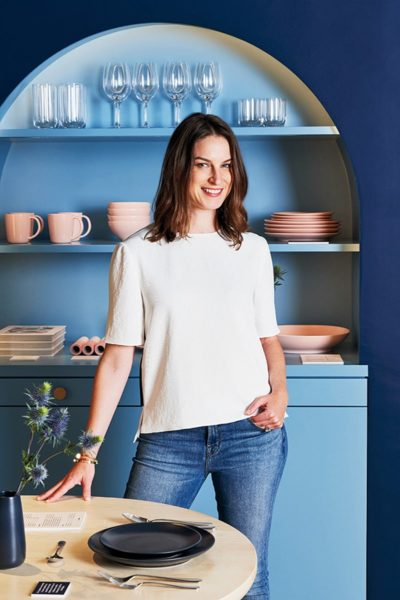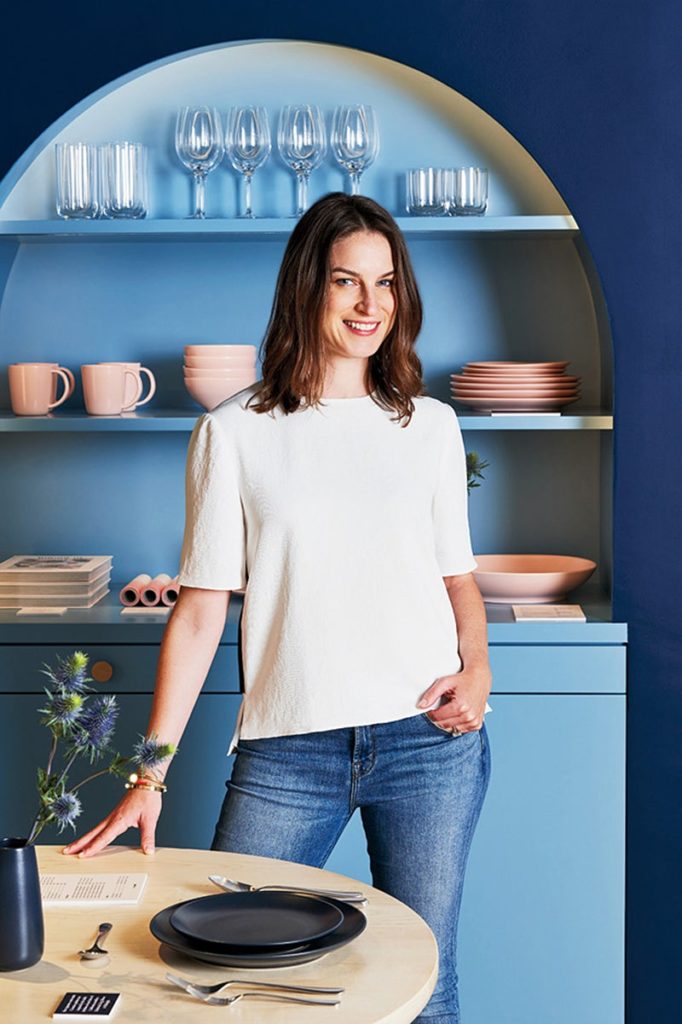Kathryn Duryea didn’t want Ikea dishes, and she didn’t want fancy china. And she bet other people her age felt the same.
4 min read
This story appears in the March 2020 issue of Entrepreneur. Subscribe »
The tableware industry is enormous and old — a $7 billion space dominated by high-end legacy brands and low-cost plates from the likes of IKEA. Is there room for more? Kathryn Duryea once worked in brand management at Tiffany & Co., where she was part of that old guard, but then she saw a new opening: “We’re in a moment of women embracing leadership and entrepreneurship, but there’s still a desire to build community at home through entertaining,” she says. That led her to create Year & Day, a modern, minimalist tableware brand that has raised $3.5 million in funding and attracted a celebrity clientele, and is growing revenue 40 percent every quarter. Here’s how she created a new place at a very crowded table.
1. Spot the opportunity.
Duryea had inherited her mom’s beloved dinnerware, but it all shattered during a move. That’s when she decided to build her own collection. “It felt like a right-hand-ring moment: I was a woman of a certain professional stature, and I wanted to treat myself,” she says. But the marketplace wasn’t serving her need. Everything felt outdated, generic, and suited to a lifestyle she couldn’t relate to. She — and other women her age — didn’t want boring everyday dishes and fancy dishes for special occasions only. She wanted tableware for every day and every occasion, and she wanted it to feel like a treat.
Related: 6 Ways Millennials Have Changed Business Practices
2. Fill in the gaps.
Duryea’s background is in branding and business; she worked with nearly every department at Tiffany & Co., and has an MBA from Stanford. She quickly assembled a small team of copywriters and art directors to help build her brand aesthetic, and she designed her ideal product herself. From there, she knew she needed help. “Production was the area where I had zero expertise,” she says. “So I networked and networked until a friend connected me with someone who could help me navigate that world.”

Image Credit: Courtesy of Year & Day
3. Defend your vision.
To appeal to her target customer — young, professional, socially minded — she wanted to create an ethical supply chain. She toured nine factories in Europe to find her match, armed with an obsessively detailed pitch deck to convince storied suppliers to work with her. But once she had an agreement, she still had to fight for respect. “Our supplier kept pushing our product back,” she says. “My husband and I were overseas for a wedding, and I showed up unannounced at the factory because I was like, I still haven’t seen samples. That got the process moving.”
Related: Larabar’s Founder Stocked Shelves at Whole Foods to Learn About Retail
4. Invest in experience.
Year & Day would sell direct to consumer, but Duryea wanted to do more than just present a bunch of dishes, glasses, and flatware online. She wanted to help shoppers understand their own needs across multiple categories. “That’s why we did not build on Shopify,” she says. “We couldn’t get that kind of customer-focused functionality.” She met with more than 50 web design firms before partnering with one called Dynamo, which helped build, for example, a playful quiz to guide customers to their ideal product combinations, which has been taken more than 100,000 times.
Related: 8 Examples of Brilliant Instagram Marketing
5. Target ideal influencers.
Ahead of launch, Duryea saw Eva Chen — a fashion exec and personality with 1.3 million Instagram followers — post that one of her life goals was to have matching dinnerware. When we launch, we’re sending this to Eva, Duryea thought. She did, and Chen unboxed her plates on Instagram, helping Year & Day’s visibility skyrocket. “I credit her with breaking the brand,” Duryea says. Mandy Moore, Cara and Poppy Delevingne, and others soon followed.





